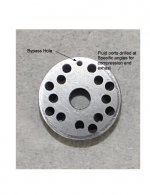Lancia & Peugeot not the only adoptees of transverse leaf spring - my Bristol 401 has the same system. Have no direct experience {yet  } of how it handles rough roads but some fellow Aussies did really well {1st in class} on the last 'Peking to Paris' in one with plenty of appallingly rough sections.
} of how it handles rough roads but some fellow Aussies did really well {1st in class} on the last 'Peking to Paris' in one with plenty of appallingly rough sections.
Regards,
Rob
Regards,
Rob


